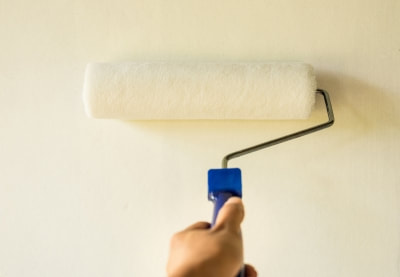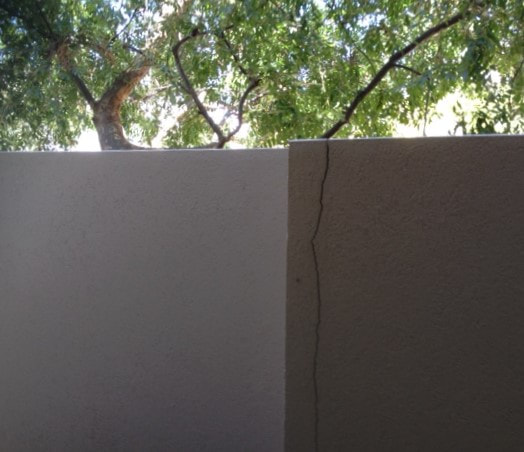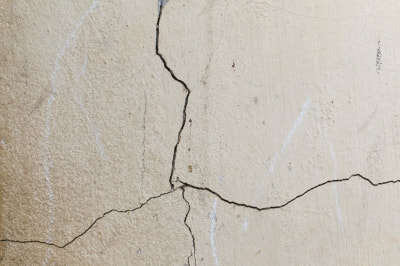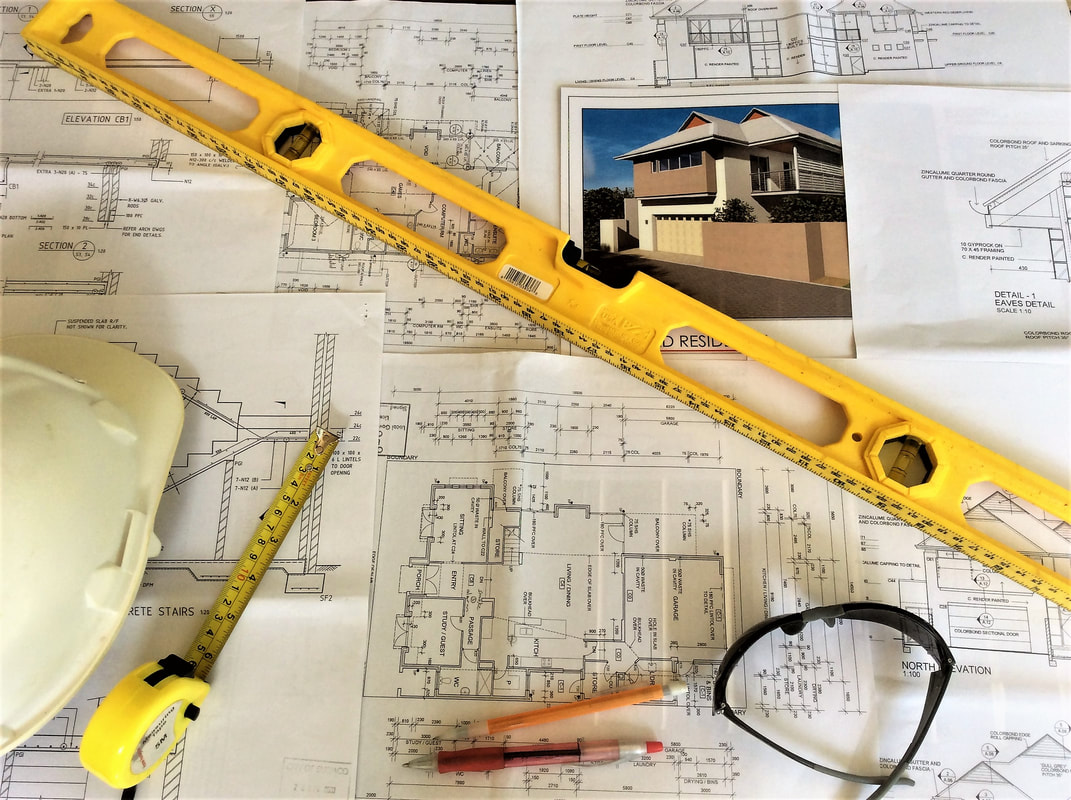|
There are a number of things that you should be examining when choosing what material you would like to do the walls of your home with. Of course, there is panelling, which can range from cheap to very expensive, but it doesn't always suit many styles of homes and the durability can vary depending on the type of material used. But, most houses have walls that have been done in either plaster or drywall, but what really is the difference? DrywallIt is a lot easier to use than plaster, but it has its drawbacks as well. According to dallas drywall contractors, it is easier to paint or put wallpaper over. Drywall is the cheaper of the two options and results in a blank canvas to decorate however you wish. PlasterPlaster is a material that is older and has traditionally been used as a covering material to brick or block walls. It is used when someone wants more ornate decorations or texture on their walls. Plaster takes a lot of skills to work with and is more difficult to deal with than drywall. Plaster can be a tad on the expensive side, but the end results are beautiful. What's the best material for your home?You might be currently trying to decide which material you are going to use for your house. Maybe you are trying to keep up with the times and update your home. Maybe you are trying to go for an older look. Either way you should be well informed about what you are buying. There are a lot of aspects that you need to think about when choosing the material for your wall. Ease of cleaning, modernism, cost, durability, style and difficulty. Are you looking for a job you can complete yourself? Are you looking to pay someone else to beautify your house for you? All of this can factor into what wall material you would like to choose. Difficulty Plaster is a difficult material to work with. It must have a material called lath. This material is what the plaster sticks to in order to make the wall. There are different kinds of lath you can use, but the different kinds will affect how well your wall is done. When using plaster, you must remember that there is a lot that goes into the project. You might require several coats of plaster. These coats must bear their own weight without cracking and be smooth enough to decorate. Drywall isn’t easy to put up, but it is a lot less difficult to put in place than plaster. Drywall is a board that you must cut to fit a certain area. Once it is cut to size you use a drill to drill in drywall screws. The hardest part of drywalling is making sure that the drywall is placed on the wall studs and the seams are covered and smooth. Style Something else you have to look at when thinking about wall material is the style. Most newer houses have drywall as their wall material. This is because it is nowhere near as difficult as plaster and does not take as long. The only thing with drywall is that it is a flat surface that is undecorated and can look boring. Plaster is old and if you want that authentic older look to you house then by all means, pick plaster. It can be sculpted into different designs and made to look extravagant. Plaster can be placed on a wall to look less flat and more textured. Durability Drywall and plaster both have different durability levels. If drywall is not being abused it can last for long periods of time. There are a few things that will absolutely destroy drywall, like water and heavy objects hitting it hard, but typically it can last for several years. Plaster has its number of issues. Not being applied properly and moisture can cause plaster to deteriorate. Plaster can show cracks more easily when the walls or foundations of your house move slightly. However, major movements of the house's foundation will even cause cracks in drywalling. Cost The costs of drywall and plaster will depend on your region and the skills available. It also varies depending on the substrate material. Plaster costs increase with the number of coats required, with a very smooth finish plaster typically requiring two coats. Textured plaster is often more expensive to use. Modernism When comparing drywall and plaster there is one last thing you should put into consideration, which is more modern? Drywall is more modern, and way more common these days. Plaster is something that is found in older homes, normally built before 1965. If someone is choosing to put plaster walls into their home, it is normally because their walls are already plastered and in need of being repaired. Most houses, even though seemingly blank and unfeeling, use drywall as their wall materials. Cleaning Plaster is sometimes textured and difficult to clean. Drywall can be much easier to clean since it is flat. The ease of cleanliness also depends on what material you use over top of the plaster or drywall, but the texture definitely makes a difference. Select the right material for your homeWhen it comes to making your choice there are a lot of things that you clearly need to think about beyond the look of your home. There are a lot of questions that need to be answered. You should never just jump into choosing your wall material as you might regret it later. Careful planning and serious decisions need to be made in order to determine what type of walls you should get. Ease of cleaning, modernism, cost, durability, style, and difficulty are all things that you should be thinking about anytime that you are making a choice to remodel your home in any way, shape or form. Author Bio: Ashley Coblentz is a content creator and social media marketing specialist currently writing for Omegaindinc.com. She has been involved in social media management since 2007 and started learning about digital marketing/content creation shortly thereafter. Want to learn more about renovating and building houses?Paul Netscher has written 2 easy to read books 'An Introduction to Building and Renovating Houses - Volumes 1 and 2'. An Introduction to Building and Renovating Houses Volume 1 deals with Hiring Contractors, Managing Construction and Finishing Your Home. and Designing your ideal home Volume 2 deals with Finding Your Ideal Property and Designing Your Dream Home.
("Great for those that DIY. Very helpful in home renovations!" said a Reader on Amazon.com 5*****) These books are available from Amazon and other online bookstores in paper and ebook.
21 Comments
Home energy efficiency could be improved significantly through simple tweaks like roof colour23/1/2020 Want to make your home more energy efficient?Want to learn more about renovating and building houses?Paul Netscher has written 2 easy to read books 'An Introduction to Building and Renovating Houses - Volumes 1 and 2'. An Introduction to Building and Renovating Houses Volume 1 deals with Hiring Contractors, Managing Construction and Finishing Your Home. and Designing your ideal home Volume 2 deals with Finding Your Ideal Property and Designing Your Dream Home.
("Great for those that DIY. Very helpful in home renovations!" said a Reader on Amazon.com 5*****) These books are available from Amazon and other online bookstores in paper and ebook. Does your home look small?Few people are fortunate enough to live in their dream home, which means most of us have to make the best of our living situations. In many cases, this means living in a space that may be a little smaller than we would like. Unless you have serious storage issues or have to share one bathroom with five other people, coping with a smaller living space can be done with a few easy-to-manage tricks. Make your home look and feel largerNo matter what type of small space you may have, there are a lot of simple yet effective techniques you can use to make that space feel much bigger. You won’t gain any square footage, but you’ll be able to spend time there without feeling cramped and claustrophobic. By taking control of your small space’s colour, texture and patterns, you can change the design of that space in a fundamental way that will affect how you and others feel in it. For example, going with a monochromatic colour palette for your smaller space can help the room feel more open and airy than having lots of contrast. Choosing accents in your space such as curtains made of light fabrics and furniture with long, thin legs also can contribute to the impression that the space is a lot larger than it really is. Walls and floors can be accentuated with striped elements that help guide the eye horizontally or vertically to create the feeling of additional height or width, as well. Accepting your small space doesn’t have to mean feeling like you’re always trapped in a phone booth. Mastering some simple elements of design and using psychology to your advantage can help small spaces feel much larger — ultimately making you more comfortable in them. The accompanying guide contains many ideas for making a small space feel bigger. Apply them to your home and it will feel much closer to the dream space you’ve always wanted. Colour, texture and patterns to make your living space feel largerColour
Texture
Patterns
Business leader Ben Creamer received his B.A. from Saint Norbert College and graduated from the University of Wisconsin Law School. After law school, he worked as an attorney and counseled sophisticated real estate clients with law firm Mayer Brown LLP. Creamer’s passion is real estate business, as his father was a real estate developer and broker for more than 50 years. In 2009, this family tradition sparked Creamer to co-found Downtown Apartment Company (DAC) — a provider of Chicago rental apartments. DAC’s mission is to help clients find downtown Chicago apartments in the Loop and surrounding neighbourhoods. Want to learn more about renovating and building houses?Paul Netscher has written 2 easy to read books 'An Introduction to Building and Renovating Houses - Volumes 1 and 2'. An Introduction to Building and Renovating Houses Volume 1 deals with Hiring Contractors, Managing Construction and Finishing Your Home. and Designing your ideal home Volume 2 deals with Finding Your Ideal Property and Designing Your Dream Home.
("Great for those that DIY. Very helpful in home renovations!" said a Reader on Amazon.com 5*****) These books are available from Amazon and other online bookstores in paper and ebook.  Image courtesy of supakorn at FreeDigitalPhotos.net Image courtesy of supakorn at FreeDigitalPhotos.net Is white the new grey? If you're making the switch, here's how to do it right, according to a interior designer. For more read this article by Dana MaMahan on NBC Want to learn more about renovating and building houses?Paul Netscher has written 2 easy to read books 'An Introduction to Building and Renovating Houses - Volumes 1 and 2'. An Introduction to Building and Renovating Houses Volume 1 deals with Hiring Contractors, Managing Construction and Finishing Your Home. and Designing your ideal home Volume 2 deals with Finding Your Ideal Property and Designing Your Dream Home.
("Great for those that DIY. Very helpful in home renovations!" said a Reader on Amazon.com 5*****) These books are available from Amazon and other online bookstores in paper and ebook.  Image courtesy of fantasista at FreeDigitalPhotos.net Image courtesy of fantasista at FreeDigitalPhotos.net The reasons for choosing to go tiny range from reducing debt, inability to afford a conventional home, the search for sustainability, a life crisis, or even preparing for an uncertain future in the face of climate change by going off-grid. Or perhaps a combination of these. An important first step is to decide what type of tiny house you want. To many, the phrase "tiny house" brings to mind an archetypal tiny house on wheels, a miniature cottage on a trailer, often made of wood, with a pitched roof and dormer windows. Indeed, most tiny housers prefer some degree of mobility, whether a ready-made or DIY tiny house, converted caravan or bus/van. ....Continue Reading this ABC News Article.... Want to learn more about renovating and building houses?I've written 2 easy to read books 'An Introduction to Building and Renovating Houses - Volumes 1 and 2'. An Introduction to Building and Renovating Houses Volume 1 deals with Hiring Contractors, Managing Construction and Finishing Your Home. and Designing your ideal home Volume 2 deals with Finding Your Ideal Property and Designing Your Dream Home.
("Great for those that DIY. Very helpful in home renovations!" said a Reader on Amazon.com 5*****) These books are available from Amazon and other online bookstores in paper and ebook. There’s no question that trees are beautiful and majestic, but they can be a pain to homeowners. When it comes to reinforcing the foundation of your home, trees play a more significant role than you may assume and it is our continued goal to ensure that your home is as safe and as comfortable as possible. Read on for more information: Tree roots are strong. Super strong. And the reason that trees can be so beautiful is that those roots search out water and nutrients. When you plant trees too close to a home, they’re going to seek out water and nutrients directly under your home. Directly under your home is also (as one might assume), the best place to fortify your foundation, either through restumping, reblocking or underpinning. When these two priorities meet, they don’t work out so well. Right off the bat, you should determine what kind of soil or land that your home is built on because tree roots will act differently.
Tree roots aren’t the only culprit of damage that can happen to your foundation. Even though they’re one of many pieces in the equation that you should be aware of, they’re nonetheless a significant one. That’s because tree roots are a catalyst for concrete settling, and when concrete settling occurs, your home’s foundation can shift and even crack. Concrete settling isn’t the nicest thing to look at, but if gone undetected, it can also be dangerous for the inhabitants of the home. So, look for the warning signs. Keep an eye out for doors that don’t swing open or shut correctly, floors that tilt one way or the other and cracks in the walls or ceiling. These symptoms can impact homes of any age, but they’ll be much more prevalent in older homes or those that haven’t seen maintenance in a while. The easiest way to avoid any of the above? Reach out to your local experts who can assess your property and correctly advise you if you need to take care of any trees that are too close to your property. A lot of neighbourhoods have guidelines on this, but the bottom line is if trees are very close, it’s a challenge that you can take care of easily. We’re here to help, so if you have questions, comments or feedback, please reach out. Company Bio: Vic Underpinners are Melbourne’s underpinning specialists, having performed thousands of successful underpinning jobs for many happy customers for more two decades. Our work is guaranteed for 15-years, so that you can shift your focus to building memories inside your home.
It starts innocently enough — a hairline crack on the lounge room wall. But, before too long, that annoying little line creeps further down the wall and widens. As a record-breaking drought continues to overwhelm large parts of Australia, more of these kinds of cracks are appearing in homes throughout the country. "In extraordinary dry times like now, those cracks will widen," warned Professor Nasser Khalili, the head of geotechnical engineering at the University of New South Wales. In the vast majority of cases, cracks in houses are caused when the soil underneath the house starts to dry and contract, causing the footing of the house to shift unevenly, which leads the walls to move and crack. ...Continue Reading... Click to view this article on ABC News Want to learn more about renovating and building houses?Paul Netscher has written 2 easy to read books 'An Introduction to Building and Renovating Houses - Volumes 1 and 2'. An Introduction to Building and Renovating Houses Volume 1 deals with Hiring Contractors, Managing Construction and Finishing Your Home. and Designing your ideal home Volume 2 deals with Finding Your Ideal Property and Designing Your Dream Home.
("Great for those that DIY. Very helpful in home renovations!" said a Reader on Amazon.com 5*****) These books are available from Amazon and other online bookstores in paper and ebook. For under $20 you could save thousands of dollars and avoid time consuming and frustrating mistakes! Before construction starts ask these important questionsBefore construction of your new house begins, or you start renovating your home, ask these important questions:
Avoid delays and additional costs on your home build projectFailure to ask these questions could result in the contractor being delayed when permits or drawings aren't available. In this case the contractor will claim a delay and additional costs. Mistakes are often caused when property boundaries aren't marked or utility lines aren't protected. Failure to put adequate insurance in place could be costly if things go wrong. Never start a construction project unless there's a clear signed contract in place with the contractor. A contract is there to protect you and the contractor. Please like and share this article. Want to learn more about renovating and building houses?Paul Netscher has written 2 easy to read books 'An Introduction to Building and Renovating Houses - Volumes 1 and 2'. An Introduction to Building and Renovating Houses Volume 1 deals with Hiring Contractors, Managing Construction and Finishing Your Home. and Designing your ideal home Volume 2 deals with Finding Your Ideal Property and Designing Your Dream Home.
("Great for those that DIY. Very helpful in home renovations!" said a Reader on Amazon.com 5*****) These books are available from Amazon and other online bookstores in paper and ebook. For under $20 you could save thousands of dollars and avoid time consuming and frustrating mistakes! © 2019 This article is not to be reproduced for commercial purposes without written permission from the author. |
AuthorI’m a construction professional, author of several successful construction management books, and a home owner. I’ve made mistakes in construction management, I’ve seen others make mistakes, but importantly I’ve had multiple successful construction projects and I’ve learned from the mistakes. I want to share these lessons and my knowledge with you. Also available from:
Amazon Au, Amazon DE, Amazon ES, Amazon CA, Amazon IT, Amazon FR, Amazon NL, Amazon India and 'An Introduction to Building Houses - Volume 2 Finding Your Ideal Property and Designing Your Dream Home'
Archives
July 2024
CategoriesWe welcome genuine comments, especially comments that add additional information to the subject matter in the article. We however reserve the right to remove inappropriate comments, which includes comments that have nothing to do with the subject, comments that include inappropriate language, and comments that are an advertisement for a product or company, or which include an advertising link. Comments must be in English. We will not enter into discussion on why a particular comment was removed.
|























 RSS Feed
RSS Feed


